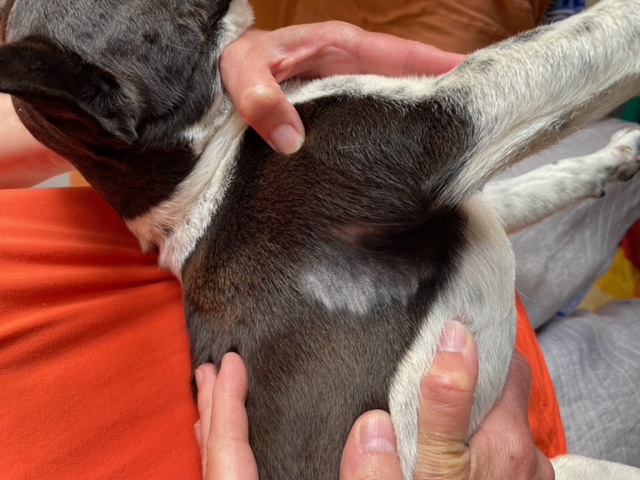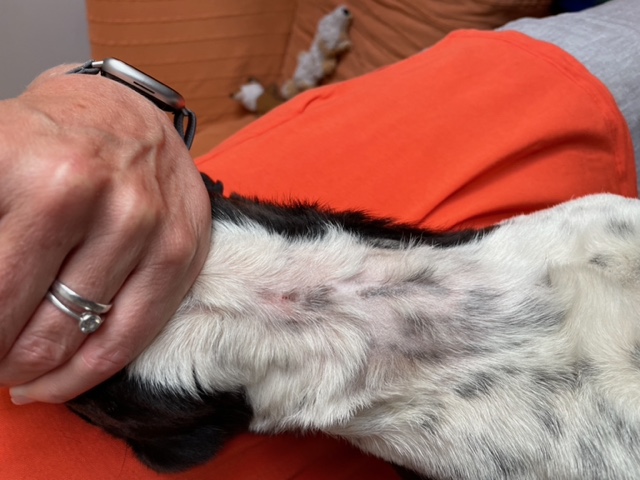A bit of hair loss
And reassurance from vet Rachel.
Clinical history
Losing hair around her right front leg and neck, getting worse. Started a few weeks ago. Not scratching, not affected elsewhere. Had a bad skin condition (perhaps mange) when she was rescued (6m ago). Flea treatment: Simparica Trio. No human skin lesions.
Current status
- Bright, alert, responsive
- Posture: normal / relaxed
- Breathing: with normal effort
- Skin, fur: Patchy hair loss in axillae and over lateral rib cage, plus ventral neck. Midline of neck is slightly red and has a small raised scab. Dorsalmost part of the right rib cage lesion has some yellowish scaling.
- Eyes: kept open, no discharge visible.
Differential diagnoses/assessment
- Rubbing of harness/collar
- Bacterial infection
- Allergies
- Parasites e.g. mites - seems less likely given SImparica treatment
- Ringworm (does not look typical)
Recommendation
Based on the skin’s appearance (the hair loss and scaling), and the location of the hair loss, this could certainly be associated with the harness, although other conditions such as parasites (unlikely), ringworm (relatively unlikely) or allergies are possible. There is also some redness on the neck, and that scaling on the right side, so there is likely to be some bacterial infection complicating the skin problem. In the short term, my advice is to clean the skin and to visit your vet if this does not start to improve.
What you should do now:
- Use a different collar and harness. Make sure that these are cleaned and thoroughly dried in between wears. Leave them off in between walks please.
- Use an antiseptic shampoo such as Douxo S3 Pyo, or Clorexyderm. Use tepid water, lather up the shampoo and leave it in contact with the skin for five minutes before rinsing. Ideally wash her two or three times a week. As this can be difficult, you can perform weekly washing with Douxo Pyo shampoo, with treatment with Douxo Pyo foam a couple of times a week in between. Chlorexyderm shampoo and foam can be used in a similar way.
- Alternatively you can use Hibiscrub as a substitute, but this should be avoided long term as it can be drying. Wet the affected areas and apply neat Hibiscrub, lather up, leave in contact with the skin for five minutes then rinse well and towel dry. Longer term, choose a chlorhexidine containing shampoo with added moisturisers to avoid drying of the skin.
- Book a visit with your vet if the skin isn’t improving in 10-14 days or you see any of the signs below
Things you should look out for:
- The hair loss area getting bigger
- Any spots or pimples
- Reddening of the skin
- Human skin lesions
Emergency level
Vet visit if no improvement or gets worse

